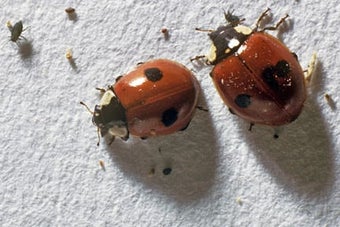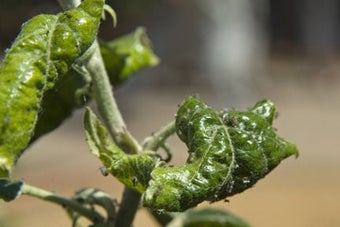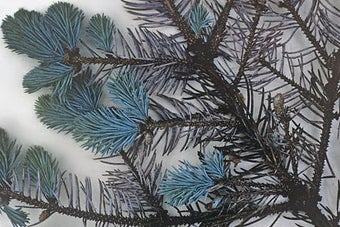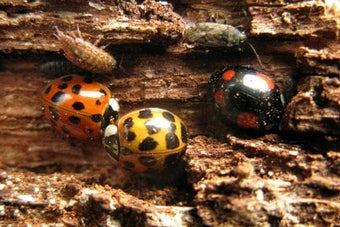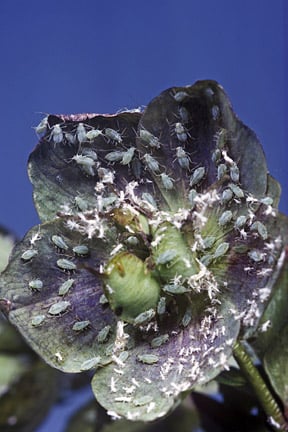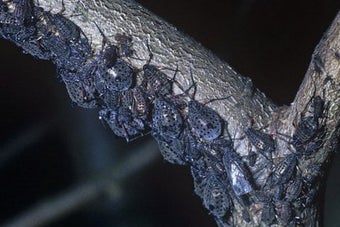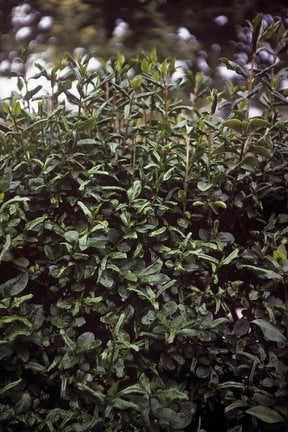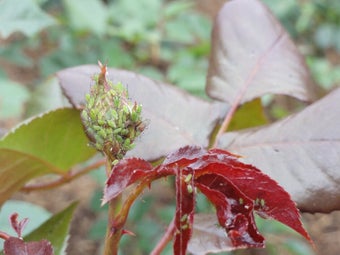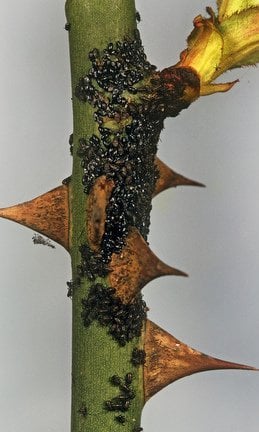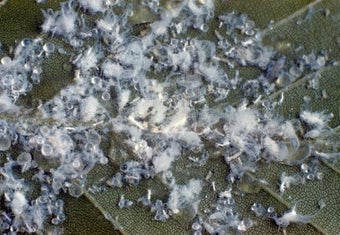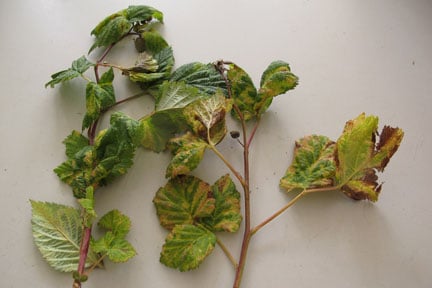
Quick facts
Common names - Large European raspberry aphid, large blackberry aphid, small European raspberry aphid and scarce blackberry aphid
Scientific names - Amphorophora idaei, A. rubi, Aphis idaei and Macrosiphum funestum
Plants affected - Raspberry, blackberry and hybrid berries
Main symptoms - Leaf curling and lack of vigour, some virus transmission
Most active - Spring and early summer
What are raspberry and blackberry aphids?
Aphids are -sucking true bugs and are an important part of many food chains, supporting many predators. They range in size from 1 to 7 mm (¼ in or less) long. Some aphids are known as greenfly or blackfly, but there are species that are yellow, pink, white or mottled. There are more than 500 aphid species in Britain. Some feed on only one or two plant species, but others can be found on a wide range of plant hosts. Almost any plant can be affected, including ornamentals, vegetables, fruits, greenhouse plants and houseplants.
Several species of aphid can feed on raspberries, blackberries and other berries including the large European raspberry aphid, large blackberry aphid, small European raspberry aphid and scarce blackberry aphid. They do not always affect cropping.
Symptoms
There are several species of aphid which can be found on raspberry, blackberries, berries and brambles. They do not always affect cropping but in some cases they can cause various degrees of leaf distortion and a lack of vigour. They can also transmit plant viruses (see main image for virus-infected raspberries). Frequently encountered species include:
Large European raspberry aphid, Amphorophora idaei. A pale yellowish green aphid that reaches 4 mm long. The aphid feeds on raspberries but does not cause damage directly it is however a raspberry virus vector and can transmit raspberry necrosis virus, raspberry leaf mottle virus, raspberry leaf spot virus and rubus yellow net virus. The aphid overwinters as eggs at the base of raspberry stems, these hatch in March the aphids feeding on the shoot tips. Later the aphids live on the undersides of leaves. Winged adults are produced in summer and disperse to other raspberry plants.
Large blackberry aphid, Amphorophora rubi. This species is very similar in appearance and lifecycle to the large European raspberry aphid but feeds on blackberry and not raspberry.
Small European raspberry, Aphis idaei. This small (2 mm long) light green or yellowish aphid feeds on raspberries and loganberries. Spring populations can cause leaf curl but it is more important as a vector of raspberry vein chlorosis virus. This aphid overwinters as eggs in axils and the base of towards the top of canes. The eggs hatch in late march and can form dense colonies at the shoot tips. Winged aphids are produced during the summer months which can spread to other bushes.
Scarce blackberry aphid, Macrosiphum funestum. This dull green 4 mm long aphid feeds on blackberry but it has limited effects on plant vigour or cropping. The aphid overwinters as eggs on the canes. The eggs hatch in spring and colonies can be most obvious in May and June at the shoot tips.
Management
Aphids form the basis of many food chains and it is not unusual to have some of these animals in a healthy balanced garden ecosystem. Whilst the raspberry and blackberry aphids do not often directly damage plants or affect cropping they can however, transmit viruses.
- Where possible tolerate populations of aphids
- Check canes frequently from spring onwards so action can be taken before a damaging population has developed
- Use finger and thumb to squash aphid colonies where practical
- Encourage aphid predators in the garden, such as ladybirds, ground beetles, hoverflies, parasitoid wasps and earwigs. Be aware that in spring aphid populations often build up before natural enemies are active in sufficient numbers and then give good control
- Some natural enemies can be purchased for use as biological control of aphids in greenhouses, including hoverfly larvae, lacewing larvae and several parasitoid wasps. More information about these can be found on the ‘aphid predators’ page.

